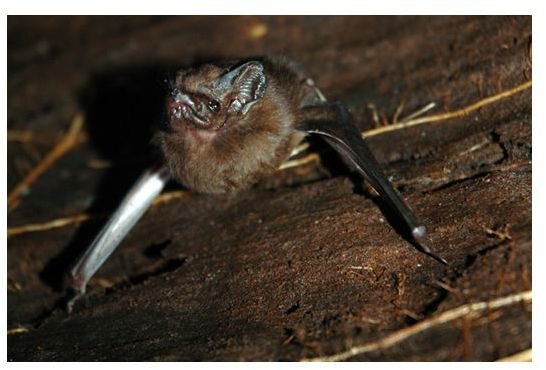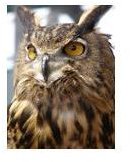Preschool Theme on Nocturnal Animals Including Owl and Bat Activities
Vocabulary
Before you begin the preschool theme on nocturnal animals, you should introduce some basic vocabulary words to your students. By
talking about these words and using them in your daily discussions about the theme, the students will become comfortable with the terms and will learn their meanings.
- Nocturnal animal: an animal that is most active during the night
- Diurnal animal: an animal that is most active during the daylight
- Adaptation: a special feature or characteristic possessed by a living thing that helps it survive in its environment
To help students connect with these terms, talk with the class about their parents’ jobs. Guide the discussion to make the point that there are a variety of occupations requiring people to work at various times of the day or night. Explain that in nature, an animal that is mainly active during the daylight hours is a diurnal animal. An animal that is most active during the night is nocturnal. List some of the differences between diurnal and nocturnal lifestyles of animals.
Adaptations
Lead the class in a discussion of how an owl has to adapt to hunt at night. If you have access to hand mirrors, pass them around and have students look at their eyes to see their pupil. Explain how the pupil changes depending on the amount of light present. The more light, the smaller the pupil. If there is little light, the pupil gets much larger to allow in as much light as possible. An owls’ pupil can become large that

virtually no iris is visible. Also, the owl has more light sensitive rods. Because of this, owls cannot move their eyes in their sockets. If they want to see around them, they must turn their head in that direction. They have more bones in their necks, allowing them to turn their heads about 270 degrees.
Bats use echolocation to help them hunt at night. Because they cannot see in the dark, they use the echolocation to help them find their prey. A bat will send out a high pitched sound that bounces off of objects that are in the path of flight. When it bounces back like an echo, the bat then uses that echo to find its prey.
Animal Charades
Write on some note cards names of nocturnal and diurnal animals. You can also use pictures. Under the animal, write nocturnal or diurnal (with young children use symbols for night and day, perhaps the sun and moon). Have a student draw a card, and help them tell the class whether the animal is nocturnal or diurnal and then act it out. The class will try and guess the animal. Take the opportunity to talk with the class which adaptations the animal uses to operate during the day or night.
Owl Activities
Owl Thumbprints
Materials
- black ink stamp pad
- sheets of paper
- washable markers or crayons
- paper towels or baby wipes
Directions
- Push each child’s fingertip gently onto the ink pad.
- Place the inked finger onto the paper and press until a print is achieved.
- Use the paper towels or baby wipes to clean off fingertips.
- Have students use crayons or markers to add details or features to finish the owl and add details of its habitat.
Poem: Five Wise Owls
Use this fun poem for creative movement and to practice counting skills as well:
5 Wise Owls perched on a door.
1 flapped his wings and then there were 4.
4 wise owls sat down to tea. 1 spilled his tea and then there were 3.
3 wise owls hooted who, who, whoooo! 1 lost his voice and then there were 2.
2 wise owls could not find any fun. “I am going to nap” he said, and then there was 1.
1 lonely owl saw the rising sun. He flew off to his home and then there were none.
Bat Activities
Show the class the video “The Magic School Bus Goes Batty”. The following activity will help them explore how echolocation works.
Materials:
- shoe box lid
- marble
- blindfolds
Students will work in groups of three. Blindfold one student and the others hold the two ends of the box lid, rolling the marble back and forth. The blindfolded student tries to listen to the ball rolling and then tries to grab it using only the sound. Like echolocation, the sound is the only thing they have to “see” where the ball is rolling just like a bat.
Use this preschool theme on nocturnal animals as an introductory lesson with valuable information that will carry over with the children as they grow.
